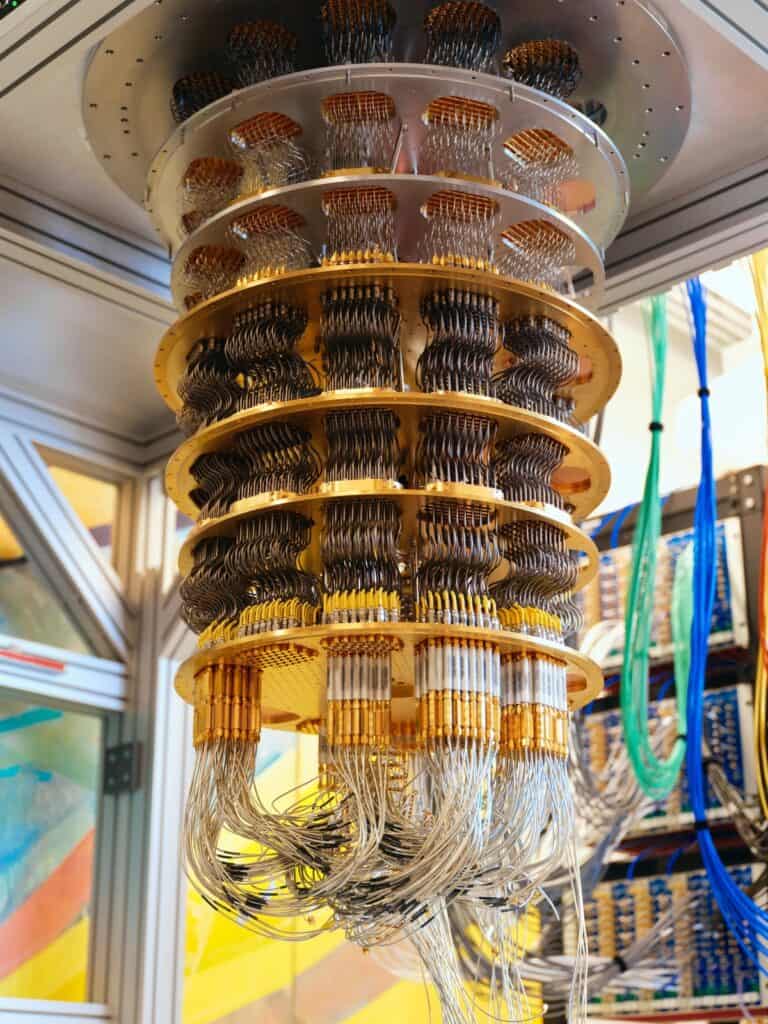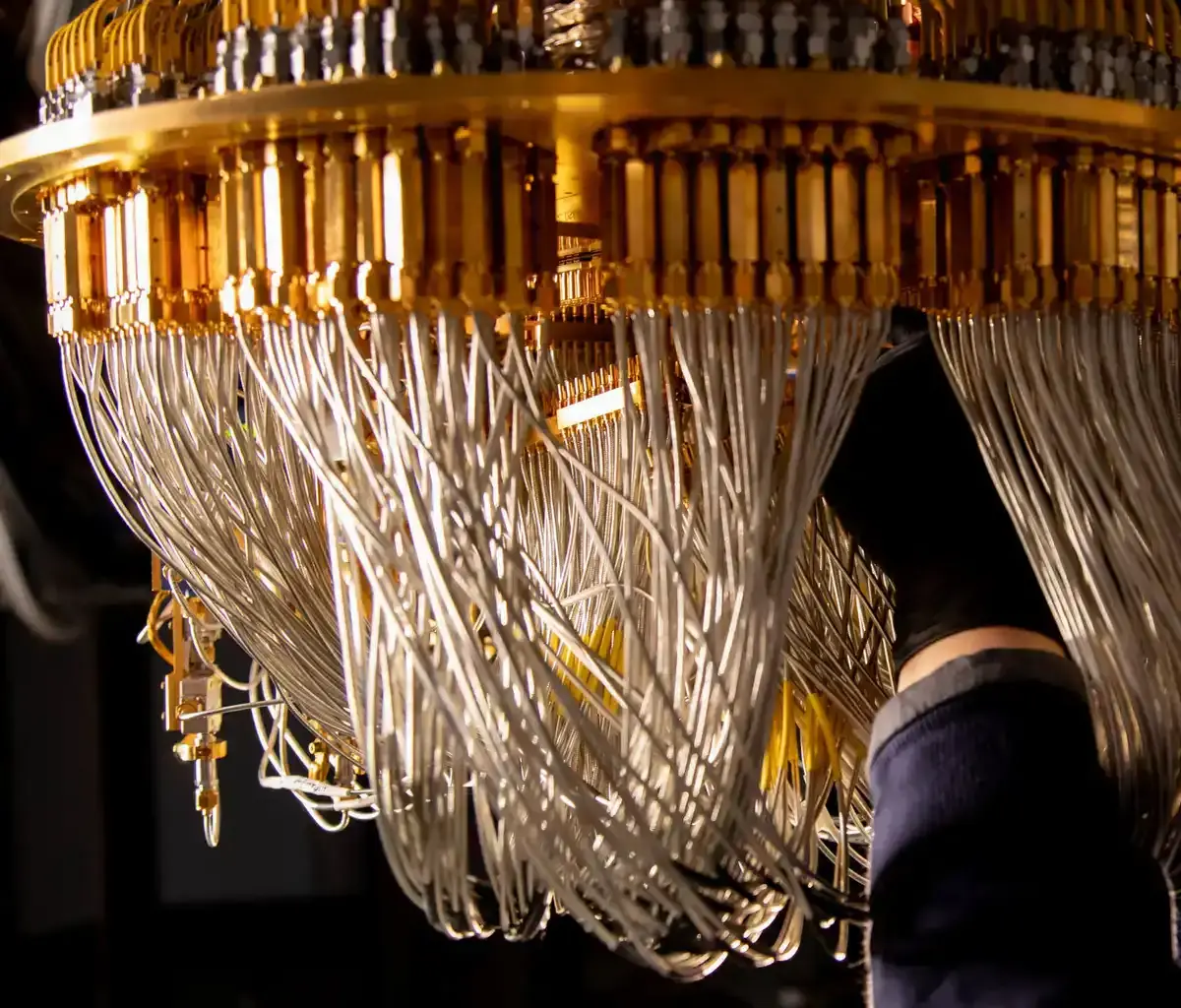 Google’s Willow quantum computer (pictured here) is delivering. Image credits: Google.
Google’s Willow quantum computer (pictured here) is delivering. Image credits: Google.
“Today, we’re announcing research that shows — for the first time in history — that a quantum computer can successfully run a verifiable algorithm on hardware,” Google writes in a new blog post. The claim, backed by a paper published in Nature, could be the first time a quantum computer proved practical efficiency.
The quantum computation on 65 qubits would take a top supercomputer an estimated 3.2 years, while the quantum processor did it in 2.1 hours.
Everything Is a Quantum Computer
The universe, at a fundamental level, can be regarded as a quantum computer. Every particle interaction, every chemical bond, every flicker of light is an information update in an immense calculation. Now, not every physicist would agree with this interpretation. However, some have looked at the universe in this way. The practical problem is that simulating any real-life situation as a quantum process is enormously difficult.
In our day-to-day world, everything from protein folding to a material’s properties are so complex that the threads of quantum information become so hopelessly tangled that they are lost to us.
This process, known as information scrambling, is closely related to a phenomenon called quantum ergodicity. It’s like dropping a speck of red dye into a blender: in an instant, the information about its shape and position is dispersed into a uniform pink blur. Ordinary measurements can only glimpse that final, mixed state, leaving the underlying quantum processes hidden from view.
But what if you could run the blender in reverse? What if you could command the chaotic swirl of “pink” to un-mix itself, revealing the pristine red drop once more?
This is one of the key reasons why researchers are so excited about quantum computers. It’s not that you’ll be able to compute more necessarily, but that you’ll be able to conduct entirely different types of calculations, possibly even directly simulating reality itself.
This is also the essence of a landmark experiment from Google Quantum AI and its collaborators, published in the journal Nature. Using a sophisticated superconducting quantum processor, the team implemented a “quantum echo” protocol that enables them to unscramble ergodicity. This “out-of-time-order” sequence allowed them to probe and measure deep, hidden correlations in a highly entangled system — correlations that are completely invisible to all other methods.
“Imagine you’re trying to find a lost ship at the bottom of the ocean,” Google writes. “Sonar technology might give you a blurry shape and tell you, “There’s a shipwreck down there.” But what if you could not only find the ship but also read the nameplate on its hull?
That’s the kind of unprecedented precision we’ve just achieved with our Willow quantum chip. Today, we’re announcing a major algorithmic breakthrough that marks a significant step towards a first real-world application.”
So… Are Quantum Computers Coming?
 The Willow quantum computer. Image credits: Google.
The Willow quantum computer. Image credits: Google.
Quantum Computers seem to be one of those inventions that are always 5-10 years away. But while practical quantum computers do seem a few years away, it would be deeply unfair to dismiss the progress recently made.
In a basic sense, quantum computers are already here. Google isn’t the only company to have access to running, functional quantum computers. We’re still over a decade away from being able to buy one at the store, but for research, quantum computers are very much here. The problem is scale.
Google’s algorithm was run on 65 qubits, with one qubit being the quantum equivalent of a bit. To scale that up is enormously difficult. Qubits rely on the delicate quantum properties of superposition and entanglement. Every temperature shift, any unexpected interference, can cause major computation errors.
The entire field is now focused on building a “fault-tolerant” quantum computer. This is a machine that can actively correct its own errors faster than they occur. The key breakthrough required for this is the logical qubit.
A logical qubit is not a physical object, but rather a robust “virtual” qubit encoded across many (perhaps thousands of) physical qubits. These physical qubits work as a team, constantly checking each other for errors and correcting them without disturbing the overall quantum information. Google’s experiment is impressive, and it shows the potential of existing systems. Still, it doesn’t bring us closer to fault-tolerant computers.
Several experts quizzed by The Guardian said that while impressive, Google’s achievement doesn’t mean quantum computers are practical yet, and that’s still a few years away.
We will likely see more and more “practical advantage” experiments like this one. Noisy quantum processors will be used as scientific accelerators, co-processors, or “quantum sensors” to solve specific, high-value problems in drug discovery, materials science, and physics simulation that are impossible for classical machines. A Google VP recently estimated this kind of “real-world use” might be just five years away.
The era of quantum computing is not quite upon us, but it’s getting closer and closer.

